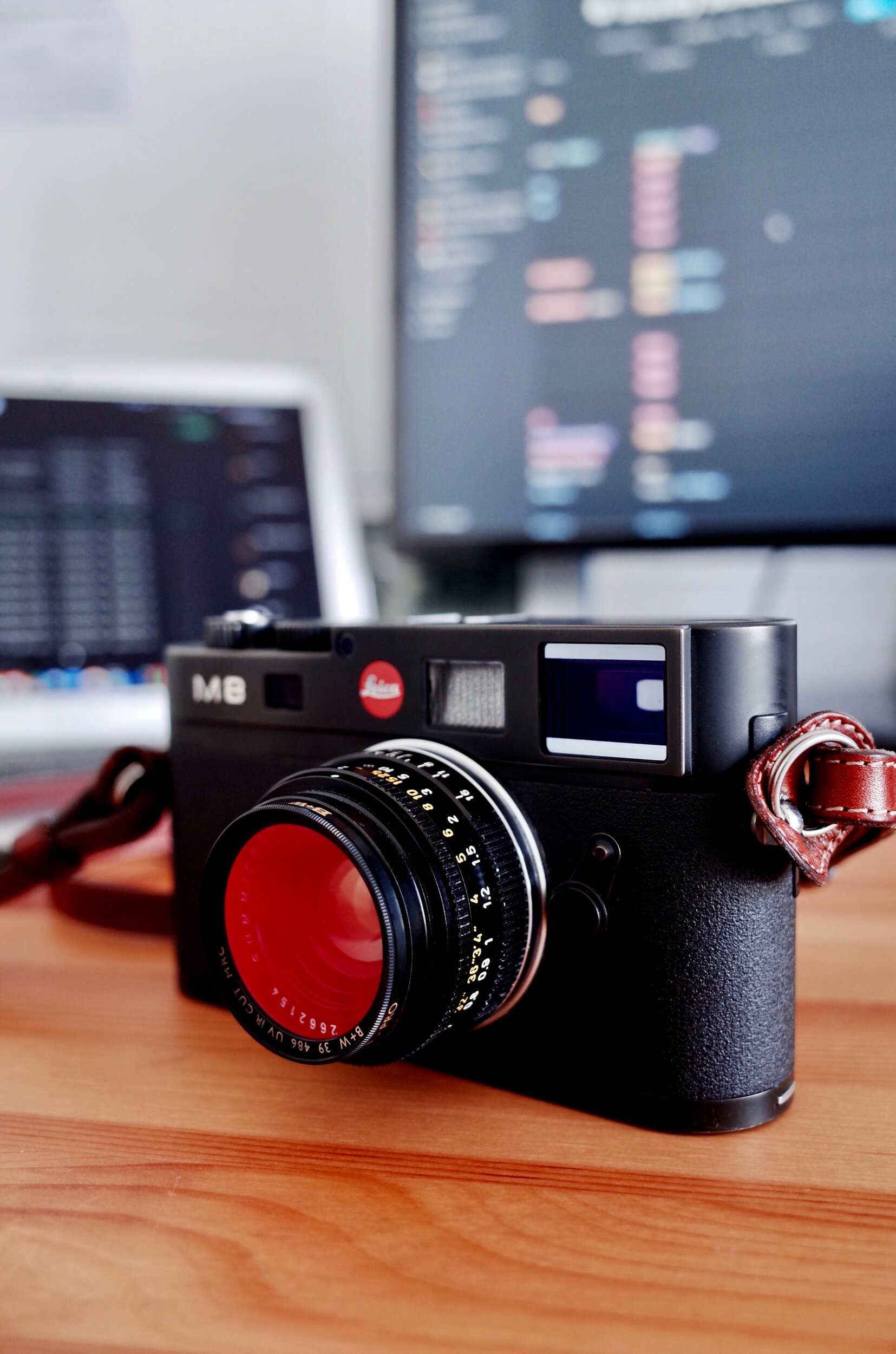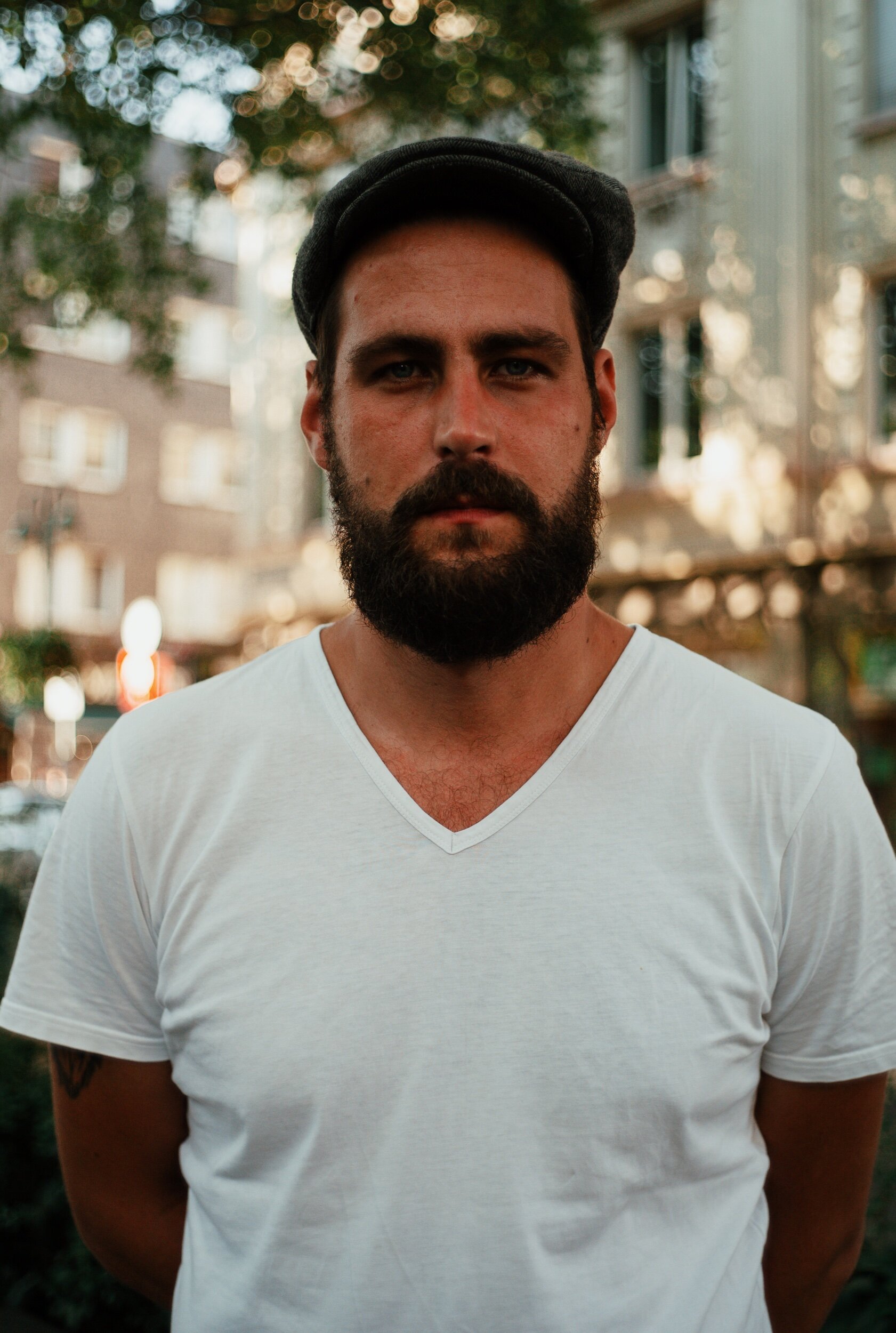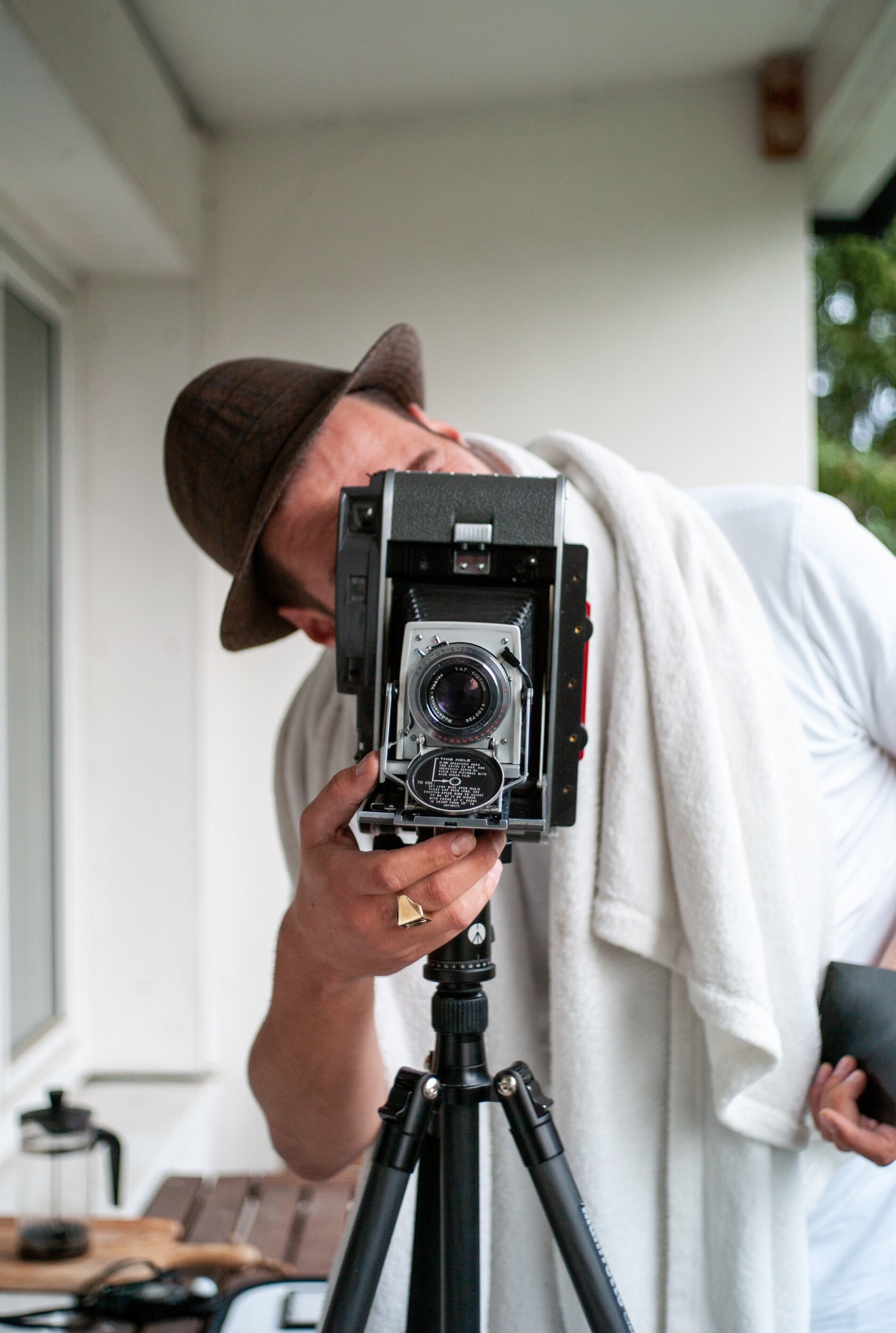Leica M8 - An Unlimited Roll of TriX and Kodachrome
A Bit of Leica History
Oskar Barnack who worked for Leica invented the 35mm photography. In 1913 he built the first prototype what would later become the first commercially successful 35mm camera. These Barnack Leicas are extremely well built that you can shoot one even today. I'm very much enjoying my Leica ii (1938) and iiif RD ST (1954). These fantastic cameras had a separate viewfinder and a rangefinder (except Leica i). Viewfinder to compose the image and rangefinder to focus. The production of Barnack Leicas had a lot of iterations and the production went until the mid 50s.
In 1954 Leica introduced the first M. It was called the Leica M3. Why 3 ? because it has 3 frame lines. "M" stands for Messsucher in German. The English translation, rangefinder doesn't do justice. Messsucher means rangefinder - viewfinder. That's what Leica M did. The viewfinder also contains the rangefinder. It was revolutionary. Henri Cartier-Bresson used Leica M, so did all great photographers. The DNA of Leica M has remained unchanged over half a century. Very few companies does that. Nikon comes close. All Nikon F lenses will mount on all Nikon F bodies. They work as well! Canon doesn’t deserve a spot here.
Leica M8
Leica M8 is the world's first digital Leica M, introduced in 2006. In digital camera terms its ancient. Yet the M8 commands respect today as it has clearly stood the test of time. I have used this camera for more than a year and have shot more than 10,000 pictures. It clearly makes me qualified to talk about it. Also my worst picture days are over now that I have shot more than 10k frames.
“Your first 10,000 pictures are your worst” - Henri Cartier-Bresson
M8 with Summicron 35mm f2 V3 with a sexy IR cut filter.
Night self portrait in the tram
Bulit
The M8 is carved out a block of brass. It screams quality. Pick one in your hand and you will never drop it down. Nothing negative can be said about the built quality of any Leica M. The M8 is not an exception.
Of course, I taped the red dot and the name. Stealth and all...
Colour
Came in two colours. Black chrome and chrome. The black chrome has a very stubborn paint that doesn't wear off easily. But when it does, you get a beautiful industrial looking wear. If I had used a black paint M like I used my M8, I would've worn out all the paint. Black chrome is brilliant. If you like to see brass as the paint wears off, get a M8.2 black paint. You see, black paint wears off differently than a black chrome. My eyes widen every time I see my buddy Collin's black paint M8.2. I guess the brass is greener on the other side.
Sensor
When Leica introduced the M8, they couldn't put a full frame sensor into the body without changing the size of the camera. So what we have on the M8 is an APS-H sensor with a 1.3x crop factor. It also boasts a 10.3MP sensor resolution. It was plenty in 2006 and its plenty now. I have done A3 sized prints and they look fantastic. With a lower resolution, you get a smaller sized file. Load it with a 32GB memory card and you are good to go for at least a couple of days. This also means that your older MacBooks and iPads will not suffer while viewing and editing the files.
It is also important to note that the sensor on the M8 is a CCD sensor developed by Eastman Kodak. CCD sensor renders an image different to a CMOS sensor. CCD is an older technology that's very much loved by a lot of people. Some say shooting the M8 is like shooting an unlimited roll of Kodachrome. The colours are very much like film. Black and white of the M8 on the other hand rivals the M9 monochrome. Some would argue that the M8 black and whites are better than the M9 monochrome. The pictures are simply sharper due to the lack of AA filter. Leica also doesn't have a IR filter over the sensor. This means that you get to put a cool looking IR cut filter over your lens. Trust me, your lens will look badass with the IR cut filter. The M8 was shipped with 2 x IR cut filters when it was sold.
ISO Performance
ISO settings are 160, 320, 640, 1250 and 2500. I always leave mine at 640 ISO as I don't care about the noise in B&W. You get the best performance at 160 ISO for colour. At 160, it's brilliant!. I wouldn't shoot above 640 ISO. The issue is not the grain, it's the weird streaks/ lines that you get. Not all cameras have this issue. It also doesn't happen to all the pictures. It is a software issue.
I also noticed that underexposing the images to later recover in Lightroom does always endup with more noise. Just expose it correctly. Over exposure deals with noise better than under exposure.
Bryan smoking a cigarette @iso 2500 - Notice the vertical lines at high iso.
Grains
The grains on the M8 is very organic and film like. The grains are larger and doesn't look artificial. I shoot TriX and HP5 Plus and develop it in Rodinal with 1+25. The bigger, the better. The grains, of course.
Nediem Smoking @iso 1250 - straight out of camera image.
Shutter Speeds
M8 is the only M to have a 1/8000th of a second. The M8.2 has a quieter (not really) shutter with a 1/4000th max shutter speed. There is a half stop between each speeds. The shutter dial is so satisfying to turn. There is also an "A" mode for Aperture Priority. After using the M8, to use an older film M is a bit confusing as the shutter speed dial is reversed.
Metering
It has a strong centre weighted metering. The indications are on the bottom of the viewfinder. Indicated by a red left and right arrow for over and under exposure respectively and a red dot between the arrows for correct exposure.
ON / OFF
The M8 has OFF, S for single, C for continues (ahem.. ahem..), and a self timer. The shutter button has a clear half stop to hold and recompose in aperture priority. In continues, the camera takes a couple of shots until it's plagued with the buffer. Hey, the M9 is not any different. I find the self timer to be extremely useful. It's a feature that I use often. I shoot a lot in low light. Trick to shoot 1/4 of a sec handheld without shake is to put your camera on self timer and take a nice deep breath and hold it just before it fires. Most shakes happen while pressing the button down. I have been doing this since my time with my M4. All you M6 fan boys will miss out on that.
A self portrait with an unbelievably low shutter speed. I call it “The Bond Hold”
LCD
The M8 and M9 shares the same screen. Some early M8 has some discolouring often called as "coffee stains". It will not affect your pictures so calm down. Mine doesn't have this Kaffeeflecken. The LCD is not as good as Super AMOLED display but you can still use it to view / change the setting and check the exposure of the image.
There is another small LCD on the top of the camera. It is unique to M8 and M8.2. No other M has it. It is to show the number of pictures you can take on your card along with the battery level. Clearly, Leica didn't think one day there would be 1 TB memory card and it would make the LCD pointless. I love it. I always leave my camera on. It is programmed to turn off after sometime. when I'm in the street, I know if the camera is on or off by just looking down at the camera. If it is off, a tap on the shutter button would wake up the camera.
Frame Lines
The framelines on the M8 is a bit weird. It has the classic frame lines built in. The issue is that you don't get what you see. Let me explain. The M8 has an APS-H sensor with a 1.3 x crop factor. So a 35mm would become a 46mm. The camera doesn't have a 46mm built in. It rather has a 50mm frame lines. It was annoying in the beginning but I got used to it pretty quickly. Now I know exactly where my frame lines end. Also the M8 has an active parallax error correction.
I absolutely love the fact that the M8 has the frame line illumination window. It looks badass. Leica removed it from the M240. The M240 and later cameras uses LCD light for frame lines. Blasphemy!
Colours
I guarantee you that the images that you get straight out of this camera will be more interesting than any modern digital camera. I have done an extremely unscientific test comparing the jpeg files of M8 and Fujifilm X100T on instagram basically asking people which one they preferred. A surprising number of people chose M8 colours. Personally, I prefer the DNG files to jpeg files on M8. I edit from DNG anyway.
Alla wearing a black dress. Shot without an IR cut filter.
Evening hangouts with André - Pre-COVID
Black and White
B&W is brilliant on M8. I always shoot high contrast B&W + DNG. Though I edit my pictures from DNG, I do that so the camera shows the pictures in B&W on the rear LCD. I think in B&W when I shoot. Colour is a distraction. I edit my files on Lightroom. Nothing really fancy, just some highlights and shadows business. Most of my favourites pictures were shot on the M8 and edited to B&W.
Marco with his James Bond underwater Nikon Nikonos
Shutter Sound
This is the loudest Leica M there is. Some love the mechanical sound of it but for me, I would much prefer a quiet shutter as I shoot street. People always think that I shoot film as it has this crunchy sound.
Summicron 35mm f2 V3 produces beautiful lens flares
Battery
The M8 uses the same battery as that of M9. It is cheap and very much available on ebay from third party manufacturers. The third party batteries don't always show the correct battery level on the top LCD. The battery lasts for a pretty long time. 250-300 shots / full charged battery. I always carry a spare battery with me.
I had no problem shooting it at -14C. .
Conversation Starter
You know you walk on the street and old guys looks at your camera and say to their wives "Das ist eine Leica". Sometimes they say to you, "eine schöne Kamera". When you get a Leica M, you don't just get a camera. You also get a piece of history. You get a camera that was used by some of the greatest photographers who ever lived. It's a VIP card if you ask me.
André with his modified sheet film camera
Shooting Street
Since it is a loud camera, you can't get too close to people unless it is a pretty loud environment already, say a train station or inside a tram. Forget shooting discreetly inside a quiet building. The M8 has a discreet mode. What is does is that it takes a picture when you press the shutter button and rewinds the curtains when you take the finger off of the button. So press the button, take a shot, walk away and release the button. Works all the time. No one has ever stopped me and asked if I had taken picture of them. Maybe I'm just too good! The size factor also plays a huge role. When you walk with a Canon 1DX with a 2000mm lens on the street, you are not being very stealthy. Even the friendliest of all dogs bark at you. A smaller camera is a huge advantage. There are also many advantages to shooting rangefinder as you can see through both your eyes (unfortunate if you are left eye dominant) and no black outs while taking pictures and all that. That's a topic for another day.
When I shoot Fuji or Ricoh GR, I know how quiet it is. I become truly invisible. This also makes the photography process less exciting imho. Shooting M8 is like hunting. You gotta wait until the right moment to fire. You got only one shot. This makes you a better photographer. You are not shooting 1000 fps and hoping one of them to turn good.
A couple walking next to the river
Moving out
Conclusion
The Leica M8 is a fantastic camera that has its own charm. It is a digital camera but shoots and feels like film. It is in many ways a bridge between analog and digital worlds. If you can live with the limitations, it is the best digital M camera you can buy without loosing an arm or an eye.
The best camera is the one that you always wear














